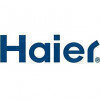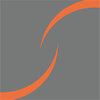Electrical Engineer
1000+ Electrical Engineer Interview Questions and Answers

Asked in ITD Cementation India

Q. How can we design a busbar for an increased fault level but the same current rating?
To design busbar for increased fault level but same current rating, increase the cross-sectional area of the busbar.
Increase the thickness of the busbar
Increase the width of the busbar
Use materials with higher conductivity
Use busbar supports with higher short-circuit strength
Consider the temperature rise of the busbar
Perform a fault level calculation to determine the required cross-sectional area

Asked in DAR Engineering

Q. What electrical equipment testing have you handled?
I have handled testing of various electrical equipment including transformers, switchgears, motors, generators, and control panels.
Testing of transformers for insulation resistance, winding resistance, turns ratio, and polarity
Testing of switchgears for insulation resistance, contact resistance, and operation
Testing of motors for insulation resistance, winding resistance, and no-load and load testing
Testing of generators for insulation resistance, winding resistance, and load...read more

Asked in Thermax Limited

Q. What effect does bypassing the CT of an AOP motor have on the motor?
Bypassing the CT of an AOP motor can lead to overcurrent and damage to the motor.
Bypassing the CT can result in the motor drawing excessive current.
This can lead to overheating of the motor windings.
Overcurrent can cause damage to the motor components.
It can also pose a safety risk due to potential electrical faults.

Asked in Jubilant Pharmova

Q. What is a machine? Principal of machine? Adwantage of high voltage?
A machine is a device that uses energy to perform a task. The principle of a machine is to make work easier. High voltage has advantages in power transmission.
A machine is a mechanical or electrical device that uses energy to perform a task.
The principle of a machine is to make work easier by multiplying force or changing the direction of force.
Examples of machines include engines, motors, pumps, and generators.
High voltage is advantageous in power transmission because it red...read more

Asked in R.V.R. PROJECTS

Q. What types of protection are used on the transformer's line side?
Types of protection on Transformer side line side
Overcurrent protection
Differential protection
Restricted earth fault protection
Overvoltage protection
Under voltage protection

Asked in Mahalaxmi TMT

Q. Why is a stator used for an induction motor?
The stator is used in an induction motor to generate a rotating magnetic field.
The stator consists of a set of windings that are connected to an AC power source.
When the AC power is applied, the stator windings create a rotating magnetic field.
This rotating magnetic field induces currents in the rotor, which in turn creates a torque and causes the rotor to rotate.
The stator windings are typically made of copper or aluminum and are arranged in a specific pattern to create the ...read more
Electrical Engineer Jobs





Q. What is the use of an earthing rod, and what is the earthing process for HT lines?
Earthing road is used in HT lines to provide a path for fault current to flow safely into the ground, preventing damage to equipment and ensuring safety.
Earthing road is a conductive strip or wire buried in the ground near HT lines.
It provides a low resistance path for fault current to flow into the ground, preventing damage to equipment and ensuring safety.
Proper installation of earthing road involves burying the conductor at a sufficient depth below the surface to ensure go...read more

Asked in Capleo Global

Q. What is the transformer step-down voltage in the high tension section?
The transformer step down voltage in high tension section depends on the specific system and requirements.
The step down voltage is determined by the transformer's turns ratio
High tension sections typically operate at voltages above 100 kV
Step down transformers are used to reduce voltage for distribution to lower voltage systems
Share interview questions and help millions of jobseekers 🌟


Asked in ITD Cementation India

Q. What is the bending radius for different HT cables?
The bending radius for HT cables varies depending on the cable type and size.
The bending radius for XLPE cables is typically 12 times the cable diameter.
For PILC cables, the bending radius is usually 20 times the cable diameter.
The bending radius for EPR cables is generally 10 times the cable diameter.
It is important to follow the manufacturer's recommendations for bending radius to avoid damaging the cable.
Bending radius can also be affected by factors such as temperature an...read more

Asked in Wapcos

Q. What is the current carrying capacity of Dog, Beaver, Zebra, and Moose conductors?
The current carrying capacity of conductors varies depending on their material and size.
The current carrying capacity of a conductor is determined by its cross-sectional area.
Conductors with larger cross-sectional areas can carry more current.
The material of the conductor also affects its current carrying capacity.
Copper is a commonly used conductor material with high current carrying capacity.
Aluminum is another conductor material but has a lower current carrying capacity co...read more

Asked in UltraTech Cement

Q. Based on your electrical experience, what problems have you faced, and how did you rectify them technically?
Electrical engineers face various challenges, including circuit failures, power quality issues, and safety concerns, requiring technical solutions.
Circuit failures can occur due to component overheating; using heat sinks and proper ventilation can mitigate this.
Power quality issues, such as voltage sags, can be addressed by installing voltage regulators or UPS systems.
Grounding problems can lead to safety hazards; ensuring proper grounding techniques and regular inspections c...read more

Asked in McDermott International

Q. What are the appropriate lighting levels for indoor and outdoor environments, and what is the calculation procedure for determining them?
Lighting levels for indoor and outdoor areas are determined based on the purpose of the space and the activities that take place.
Indoor lighting levels are typically measured in foot-candles or lux
Outdoor lighting levels are typically measured in lumens per square meter
Calculation procedures involve determining the required illuminance level for the space and selecting appropriate light fixtures and bulbs
Factors such as color rendering index, color temperature, and glare cont...read more

Asked in Thermax Limited

Q. What could be the reason for repeated burning of the CT cable in a 22 kW AOP motor?
The repeated burning of a 22 kW AOP motor CT cable may be due to overloading, short circuits, poor insulation, or incorrect cable sizing.
Check for overloading of the motor causing excessive heat in the cable
Inspect for short circuits in the motor or the wiring
Ensure proper insulation of the cable to prevent overheating
Verify if the cable size is appropriate for the motor's power requirements

Asked in Globalization Partners International

Q. What is a current transformer?
A current transformer is a device that measures the current flowing in a circuit by producing a proportional current in its secondary winding.
Consists of a primary winding and a secondary winding
Primary winding is connected in series with the circuit carrying the current to be measured
Secondary winding is connected to a measuring instrument or protective relay
Produces a current in the secondary winding that is proportional to the current in the primary winding
Used for current...read more

Asked in Aarti Industries

Q. Does core loss depend upon frequency? If yes, how?
Yes, core loss depends upon frequency.
Core loss is the energy lost in the magnetic core of a transformer or inductor.
It is caused by hysteresis and eddy current losses.
Hysteresis loss is proportional to the frequency and magnetic flux density.
Eddy current loss is proportional to the square of the frequency and the thickness of the core.
Higher frequency leads to higher core loss, which can cause overheating and reduced efficiency.

Asked in Larsen & Toubro Limited

Q. Depending on the availability of cables, how do you decide which cable to use for a specific equipment load?
Choosing the right cable depends on load type, voltage, distance, and environmental factors.
Consider the load type: for motors, use armored cables; for lighting, use PVC insulated cables.
Voltage rating is crucial: for high voltage equipment, select cables rated above the operating voltage.
Distance affects voltage drop: for long runs, use larger gauge cables to minimize losses.
Environmental conditions matter: in wet areas, use cables with appropriate insulation and protection....read more

Asked in Tata Motors

Q. What is the difference between electrical and electronic devices?
Electrical devices use electricity for power, while electronic devices manipulate electrical signals for specific functions.
Electrical devices primarily deal with the flow of electric current (e.g., motors, transformers).
Electronic devices control the flow of electrons and use components like transistors and diodes (e.g., smartphones, computers).
Electrical devices are often used for power generation and distribution, while electronic devices are used for communication and dat...read more

Asked in Tata Steel

Q. Why is the dew point test performed on transformers?
Dewpoint test is done in transformer to check the moisture content in the insulation oil.
Moisture in insulation oil can cause breakdown of transformer insulation
Dewpoint test helps to determine the moisture content in the oil
It is a preventive maintenance measure to avoid transformer failure
The test involves cooling a mirror until dew forms on it, and measuring the temperature at which dew forms


Q. What is the process of feeder charging and handover?
Feeder charging and handing over involves the process of transferring electrical power from one source to another.
Ensure proper safety measures are in place before starting the process
Check the voltage and current ratings of the feeder to ensure compatibility with the receiving end
Disconnect the feeder from the power source and connect it to the receiving end
Verify the successful transfer of power and ensure proper functioning of the system
Complete necessary documentation and...read more


Q. What types of equipment are required for working on LT and HT lines?
Various types of equipment are required in LT and HT line work, including transformers, circuit breakers, insulators, conductors, and protective devices.
Transformers
Circuit breakers
Insulators
Conductors
Protective devices

Asked in Tata Steel

Q. What are the different types of communication cables used in your industry?
Different types of communication cables used in the electrical engineering industry include coaxial cables, twisted pair cables, and fiber optic cables.
Coaxial cables: used for high-frequency transmission and commonly used in cable television and computer networks.
Twisted pair cables: consists of pairs of insulated copper wires twisted together to reduce electromagnetic interference, commonly used in Ethernet networks.
Fiber optic cables: use light pulses to transmit data and ...read more

Asked in Hitachi Energy

Q. Given the image of switch,which type of switch shown in the fig
The switch shown in the image is a toggle switch.
The switch has a lever that can be moved up and down to turn it on or off.
Toggle switches are commonly used in electronic devices and appliances.
Examples of toggle switches include light switches and power switches on electronic devices.

Asked in Diamond Beverages

Q. Can you draw a single-line diagram of a star-delta starter?
Yes, I can draw a single line diagram of s/d starter.
A single line diagram shows the electrical connections and components in a simplified manner.
For an s/d starter, the diagram would include the power supply, motor, overload relay, and contactor.
The diagram would also show the control circuit components such as push buttons and switches.
The diagram should follow standard symbols and conventions for electrical diagrams.
An example of a single line diagram for an s/d starter ca...read more

Asked in Larsen & Toubro Limited

Q. How do you size a CT?
CT sizing is done by considering the primary current, burden, and accuracy class of the CT.
Determine the primary current of the system
Calculate the burden of the CT
Select the accuracy class of the CT
Use the formula: CT rating = primary current x burden / (accuracy class x 100)
Example: For a 400A primary current, 5VA burden, and 0.5 accuracy class, CT rating = 400 x 5 / (0.5 x 100) = 40A
Asked in UM Autocomp

Q. Can you manage spare parts, records, and documentation?
Yes, I have experience managing spare parts and their records and documents.
I have previously managed spare parts and their records and documents in my previous job.
I am familiar with inventory management software and can use it to keep track of spare parts.
I can create and maintain a database of spare parts, including their specifications, purchase dates, and maintenance history.
I can also ensure that all necessary documentation, such as manuals and warranties, are properly ...read more

Asked in Haier Appliances India

Q. What is the use of a compressor in AC?
Compressor in AC is used to compress the refrigerant gas and increase its temperature and pressure.
Compressor is the heart of an AC system.
It compresses the low-pressure refrigerant gas into high-pressure gas.
This high-pressure gas then flows through the condenser where it releases heat and becomes a high-pressure liquid.
The liquid then flows through the expansion valve where it expands and becomes a low-pressure liquid.
This low-pressure liquid then flows through the evaporat...read more

Asked in Mecon

Q. Why is the earth wire in a power plug bigger in size?
The power plug earth wire is bigger in size to ensure safety and prevent electrical shocks.
The earth wire provides a path for the current to flow in case of a fault or short circuit.
A larger wire size reduces resistance and allows for the safe dissipation of excess current.
It helps to protect individuals and equipment from electric shock hazards.
The earth wire is connected to the ground, which acts as a reference point for electrical potential.
Examples of larger earth wire si...read more

Asked in ArcelorMittal Nippon Steel

Q. How do we communicate between an S7 PLC and an ABB drive using Profibus?
To communicate S7 PLC and ABB drive using Profibus, you need to configure the Profibus network, set up the communication parameters, and establish the communication link.
Configure the Profibus network by setting the correct baud rate, address, and other network parameters.
Set up the communication parameters on both the S7 PLC and ABB drive to ensure they are compatible with each other.
Establish the communication link by configuring the input and output data exchange between t...read more

Asked in Spectrum Talent Management

Q. What is a power transformer?
There is no such thing as pawar transfarmer.

Asked in Wind World

Q. What type of conductor is used in transmission?
Copper and aluminum are commonly used conductors in transmission.
Copper is an excellent conductor due to its high electrical conductivity.
Aluminum is also widely used as it is lightweight and cost-effective.
Other conductors like silver and gold are rarely used due to their high cost.
Copper-clad steel conductors are used in specific applications where strength is required.
Interview Questions of Similar Designations
Interview Experiences of Popular Companies





Top Interview Questions for Electrical Engineer Related Skills

Calculate your in-hand salary
Confused about how your in-hand salary is calculated? Enter your annual salary (CTC) and get your in-hand salary


Reviews
Interviews
Salaries
Users










